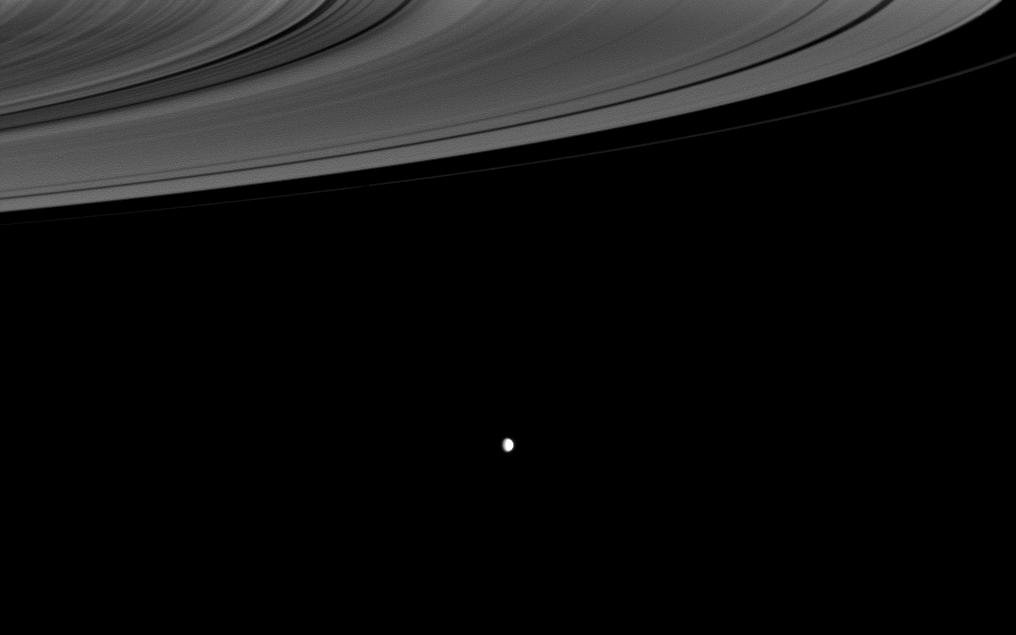Brilliance Beyond the Rings

| PIA Number | PIA11558 |
|---|---|
| Language |
|
The Cassini spacecraft looks past the illuminated side of Saturn's rings to the brilliant moon Enceladus.
Although the moon's brightness may make it appear closer to the observer, Enceladus is actually farther from the spacecraft than the rings in this image. As Saturn's brightest, whitest satellite, Enceladus (504 kilometers, or 313 miles across) has one of the most reflective surfaces in the solar system (see Bright Moon in Darkness).
The rings have been brightened relative to the moon to enhance visibility.
This view looks toward the sunlit side of the rings from about 5 degrees below the ringplane. The image was taken in visible light with the Cassini spacecraft wide-angle camera on June 25, 2009. The view was obtained at a distance of approximately 670,000 kilometers (416,000 miles) from Enceladus and at a Sun-Enceladus-spacecraft, or phase, angle of 51 degrees. Image scale is 40 kilometers (25 miles) per pixel.
The Cassini-Huygens mission is a cooperative project of NASA, the European Space Agency and the Italian Space Agency. The Jet Propulsion Laboratory, a division of the California Institute of Technology in Pasadena, manages the mission for NASA's Science Mission Directorate, Washington, D.C. The Cassini orbiter and its two onboard cameras were designed, developed and assembled at JPL. The imaging operations center is based at the Space Science Institute in Boulder, Colo.
For more information about the Cassini-Huygens mission visit http://saturn.jpl.nasa.gov . The Cassini imaging team homepage is at http://ciclops.org .
Credit: NASA/JPL/Space Science Institute
